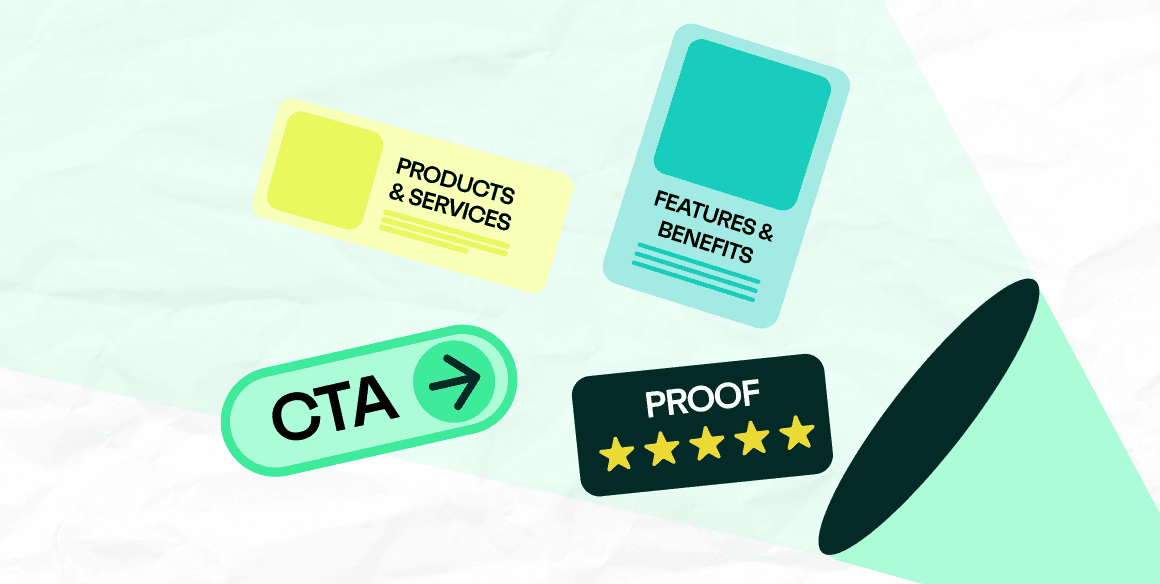As designers, we create digital products and experiences with the intention of building the right thing for the right people. Take a marketing page, for example. We know how to assemble a solid hero section, craft a compelling CTA, and ensure the flows make sense for our end users. For example, should the CTA block be before or after a features & benefits block and why does it make sense there? Too often, we focus only on what we’re saying and how we’re showing it without digging into why these choices matter.
At a recent Lunch & Learn, we dug deeper into this idea with our team and wanted to share some of the concepts we discussed with our online community.
Marketing is like a storefront
Imagine walking down a busy street lined with stores. What makes you stop and take a closer look? Maybe it’s a striking window display or a well-placed sign, or perhaps you’ve already meant to check out that store. That’s exactly how digital marketing works—our marketing pages are the storefronts of the digital world, guiding visitors from curiosity to action.
Every part of a storefront has a role, just like a marketing page. The hero section is the big display window—it sets the tone and tells people what to expect. Navigation and layout are like clear signage, helping visitors find their way.
Purpose of marketing in digital products (and why you should think like a marketer)
Whether your audience is buying a product, signing up for a newsletter, or exploring more of your marketing pages, they’re influenced to click that link or sign up for it. Marketing is all about influence. The marketing funnel helps us visualize that progression, moving people from being just aware of something to engaging with it.

People are moving through the funnel right now, but do we understand why one page converts better than another? Are we being intentional about moving people forward and does that communicate with our flows?
Think of the different content sections within your site as a series of "blocks": hero, brand story, feature highlight, testimonials, CTA, etc. that, when positioned with purpose and intent, help to guide users and move them from consideration to purchase.

Each aspect of our content blocks can help at different points in the funnel. Most of the time, we combine each of these to communicate with our audiences more effectively.

Note: These are not solid placements in the funnel; this is an example of a typical flow on your homepage, showing where these aspects would help the most.
Every page, every message, and every interaction should serve a purpose: giving people who match well with what you’re marketing the confidence to say yes and those who are mismatched time-saving exits.
Seeing marketing in action
When we go back to the funnel and our blocks that go into a homepage, we can see that the blocks can help in different marketing funnel stages. We can also use a combination of the aspects to address user needs better.
We’ve included examples of how these aspects are used on other pages below!



Clients don’t always see these details the way we do. They might ask for a page redesign but not understand why structure, messaging, and flow matter. The marketing funnel helps us understand why we make the decisions we do. It gives us shared language and clarity, making it easier to align with each other—and with the people we’re designing for.
A more intentional approach
Before jumping into design, stepping back and asking the right questions can make all the difference.
Here’s a simple framework to help guide more intentional marketing decisions:
Who is this for? What stage of the funnel are they in—awareness, consideration, or decision?
What decision are they trying to make? Are they gathering info, comparing options, or ready to act?
What’s the main thing they need to know? What problem are we solving for them right now?
How does this section support their next step? Does it guide them forward clearly and intentionally?
Does this make them say yes confidently if they're the right person? And if they’re the wrong person, does it help them realize that?
Bringing it all together
It’s easy to focus on what we’re building and how we’re building it. But marketing helps us ask why. That shift in thinking leads to better conversations, smarter experiences, and stronger connections with our teams, clients, and the people we’re building for.
Designing with purpose means helping the right person make the right decision at the right time. When we think like marketers, we stop just placing blocks—we start guiding journeys. That’s how we build with intention—and impact.



